Exhibition
Accession: A collecting booth for an AI museum
Tom Schofield

Accession is a collecting booth for an imaginary museum whose collection is described and organised by AI. Visitors submit everyday items to the booth where they are photographed and subjected to a number of AI processes which describe and classify the objects submitted. Through the exhibition the digital collection grows but as it does so the AI management becomes more and more selective about what is and is not accepted, rejecting new items that are a poor fit for the collection. Museum collections and AI classifiers rely on maintaining homogeneity. A museum that collected anything would be a dumping ground with no identity, while AIs rely on training sets that have strong visual commonality. Both rely on a sense of sameness but both are subject to critical debates about diversity and representation. Accession explores this relationship by acting out a fictional but plausible scenario through commercially available AI technologies.
Tom Schofield
Newcastle University
Newcastle-upon-Tyne, UK
Boogaloo Bias
Derek Curry
Jennifer Gradecki
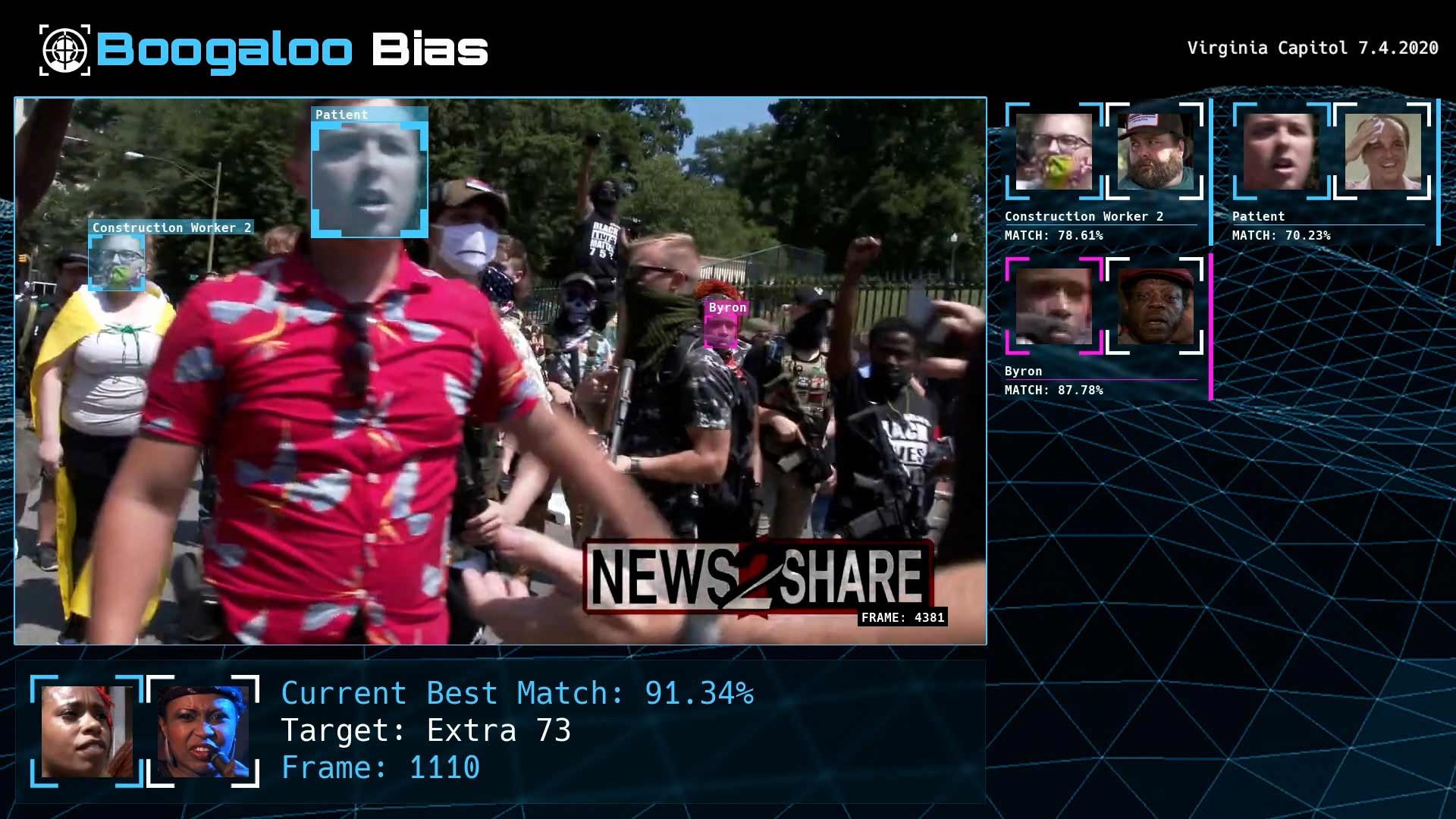
Boogaloo Bias is an interactive artwork and research project that addresses some of the known problems with the unregulated use of facial recognition technologies, including the practice of ‘brute forcing’ where, in the absence of high-quality images of a suspect, law enforcement agents have been known to substitute images of celebrities the suspect is reported to resemble. To lampoon this approach, the Boogaloo Bias facial recognition algorithm searches for members of the anti-law enforcement militia, the Boogaloo Bois, using a facial recognition algorithm trained on faces of characters from the 1984 movie Breakin’ 2: Electric Boogaloo. The film is the namesake for the Boogaloo Bois, an anti-law enforcement militia that emerged from 4chan meme culture and have been present at both right and left-wing protests in the US since January 2020. The system is used to search live video feeds, protest footage, and images that are uploaded to the Boogaloo Bias website. All matches made by the system are false positives. No information from the live feeds or website uploads is saved or shared.
Derek Curry
Northeastern University
Boston, USA
Jennifer Gradecki
Northeastern University
Boston, USA
Suspicious Behavior
Linda Kronman
Andreas Zingerle
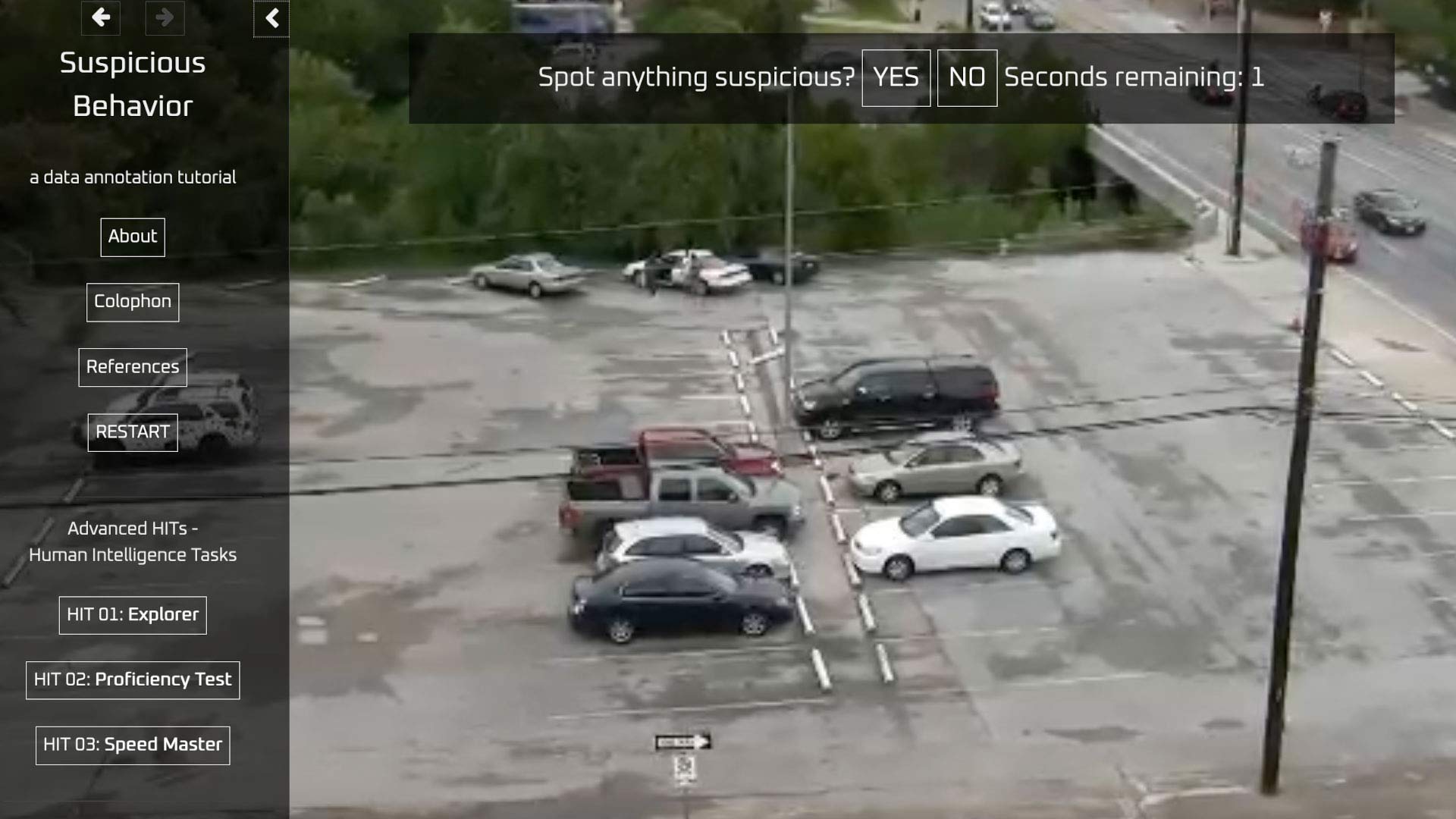
Suspicious Behavior is a fictional annotation tutorial inviting readers to critically examine machine learning datasets assembled to detect anomality in surveillance footage. This artwork builds upon artistic methods for scrutinizing image datasets, adding the perspective of on-demand workers to expand insight into classification practices. As readers in the role of annotator-trainees advance through modules of the tutorial, they are introduced to aspects of hidden human labor involved in curating datasets. With limited agency, in assemblages including authorities, developers, data curators and platforms algorithms, the annotators play a part in shaping how ‘intelligent’ computer vision systems will interpret behavior.
Linda Kronman
University of Bergen
Bergen, NO
Andreas Zingerle
Kairus Art+Research
Graz, AT
Keep Smiling
Varvara Guljajeva
Mar Canet Sola
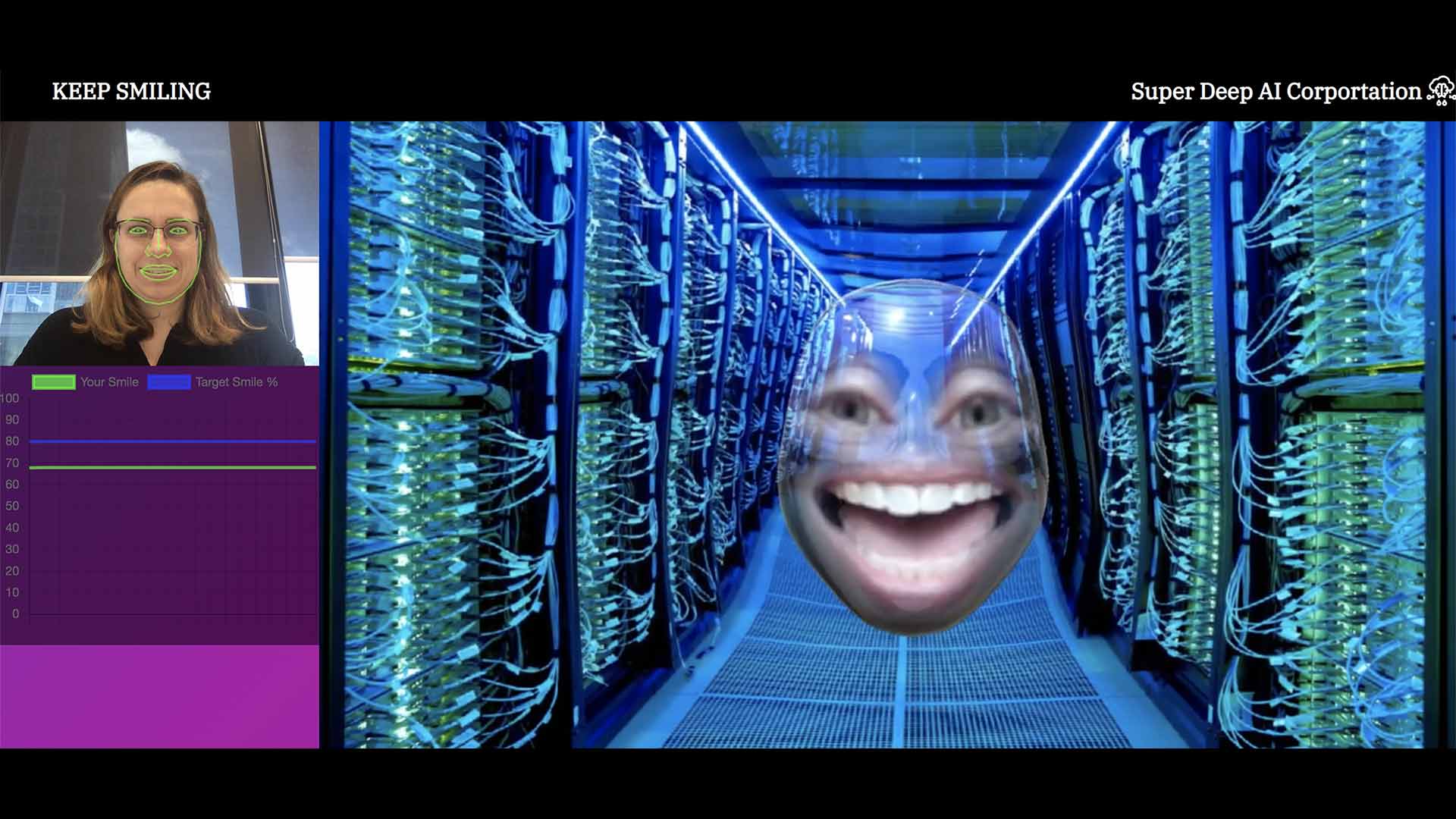
Keep Smiling is an online interactive experience in the form of a job interview conducted by an AI agent. The agent asks the participant to smile, to smile even more, and to count objects she/he can see through a nearby window while continuing to smile (the system intends to extract the maximum profit from the human participant). Throughout this interaction the participant’s face is detected via a webcam and the smile is rated against a happiness meter. As soon as the participant's smile rating drops below average, she/he is fired and the interview is terminated. The artwork draws attention to the highly automated and monitored world in which the responsibility for making decisions has been handed to machines and algorithms, and our emotions are evaluated without our consent. By interacting with the artwork we can experience just how unreliable an emotion detection algorithm can be despite its widespread deployment in our everyday lives. The artwork incorporates a number of elements from the AI industry, illustrating how decision-making and labour culture have been transformed by technology and the absurdity of basing key elements of this culture on the extraction of data and behavioural monitoring of subjects.
Varvara Guljajeva
Computational Media and Arts, The Hong Kong University of Science and Technology
Guangzhou, CN
Integrative Systems and Design, The Hong Kong University of Science and Technology
Hong Kong, CN
Mar Canet Sola
Baltic Film, Media and Arts School, Tallinn University
Tallinn, EE
Going Viral
Derek Curry
Jennifer Gradecki
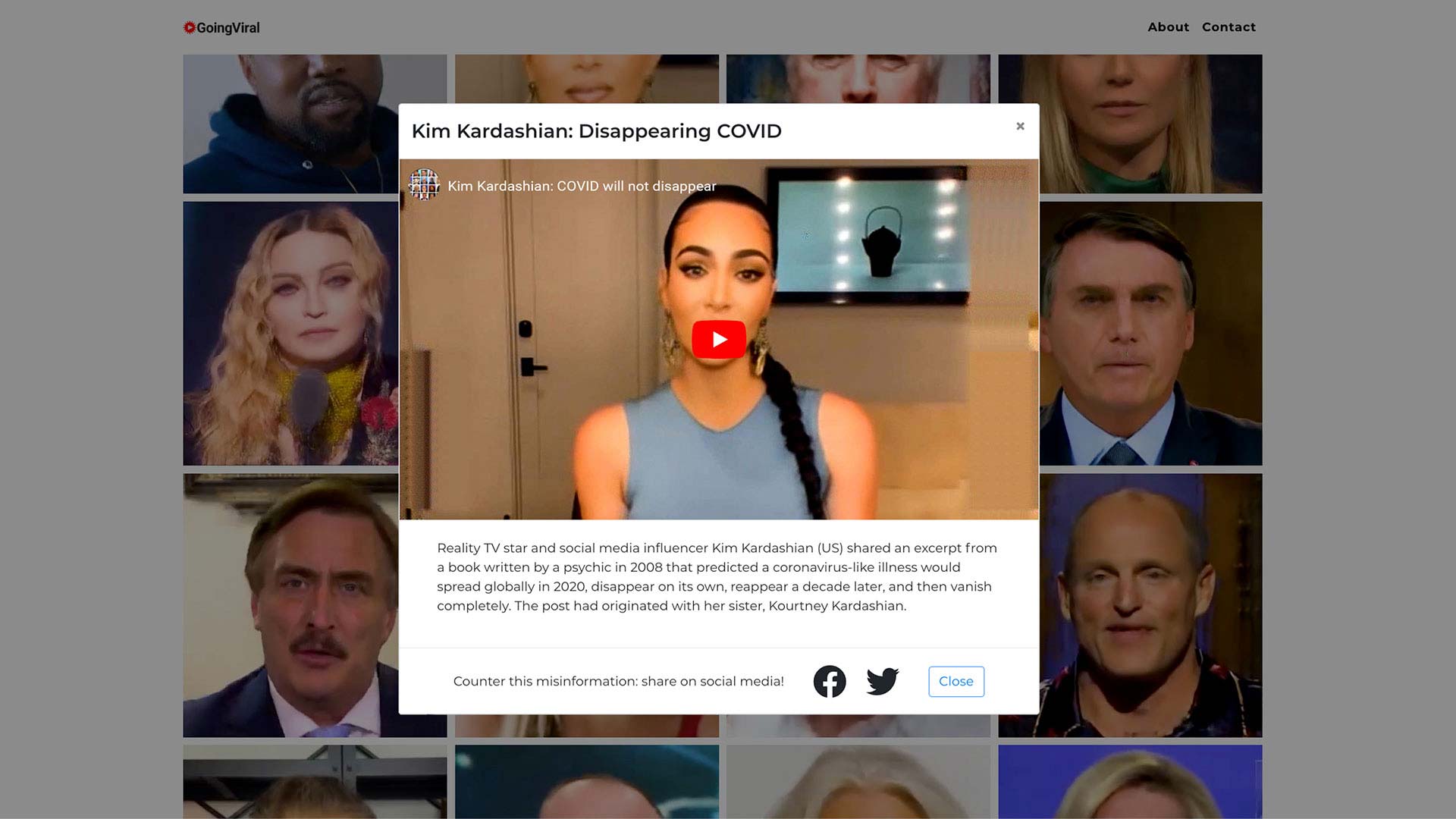
Going Viral is an interactive artwork that invites people to intervene in the spreading of misinformation by sharing informational videos about COVID-19 that feature algorithmically generated celebrities, social media influencers, and politicians that have made or shared claims about the coronavirus that are counter to the official consensus of healthcare professionals and were categorized as misinformation. In the videos, algorithmically-generated speakers deliver public service announcements or present news stories that counter the misinformation they had previously promoted on social media. The shareable YouTube videos present a recognizable, but glitchy, reconstruction of the celebrities. The obvious digital fabrication of the videos prevents their classification as deepfakes by content moderators and helps viewers reflect on the authority of celebrities on issues of public health and the validity of information shared on social media.
Derek Curry
Northeastern University
Boston, USA
Jennifer Gradecki
Northeastern University
Boston, USA
Things I do when I'm bored
Pedro Ferreira
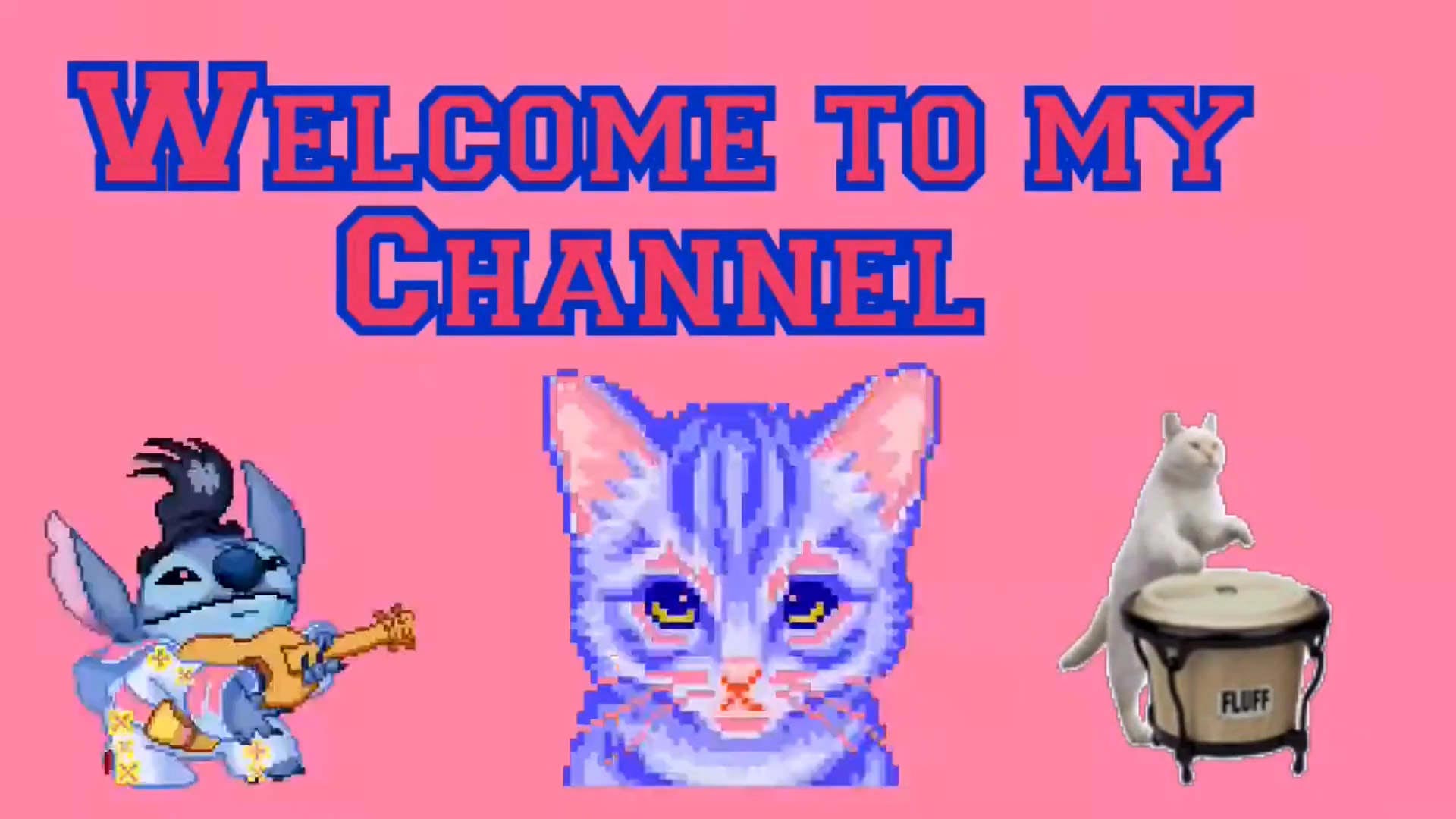
Things I do when I’m bored (2017-22) addresses vloggers’ relationship with feeling bored. The work is composed of a browser-based video compilation and a video installation that assembles found footage from YouTube vlogs with less than 100 or even zero views. It emphasises the vloggers’ self-awareness in their performative statements of boredom as they look at their representation on-screen with the hope to be viewed, subscribed to, commented on, liked, shared, and followed by others. The work explores the notion that the feeling of boredom on social media, the internet at large, and daily life suffused with digital media technologies, is part of a post-digital symptom of disenchantment in which social media and digital technologies fail to entertain these vloggers.
Pedro Ferreira
Universidade de Lisboa, Faculdade de Belas-Artes, Centro de Investigação e de Estudos em Belas-Artes (CIEBA)
Lisboa, PT
Ecology of Worries
Caitlin Foley
Misha Rabinovich

Ecology of Worries is an animation featuring variously evolved critters that are driven to speak by machine learning algorithms trained on actual human worries. The creatures’ performance of the worries spans a gradient of intelligibility, reflecting on the evolution of machine learning systems and whether or not we should teach a machine to worry for us. The animated characters are also representations of our collective worries, given life and evolved through evolving algorithms. The critters are trained using an archive of thousands of recorded worries from people in the US and abroad which we began collecting in 2016. The emotionalization of events by the media is engendering worries that swirl inside us, trapping us in manufactured anxieties. We have been asking people in our communities what they are worried about and find they have a plethora of concerns at the ready. This process is an opportunity to collect various types of worries and consider similarities in emotional cycles across communities.
Caitlin Foley
UMass Lowell, Lowell
Massachusetts, USA
Misha Rabinovich
UMass Lowell, Lowell
Massachusetts, USA
Ich Sage Was Ich Sagen Kann (ISWISK): Voice Composition by real-time Automatic Speech Recognition
Hyungjoong Kim
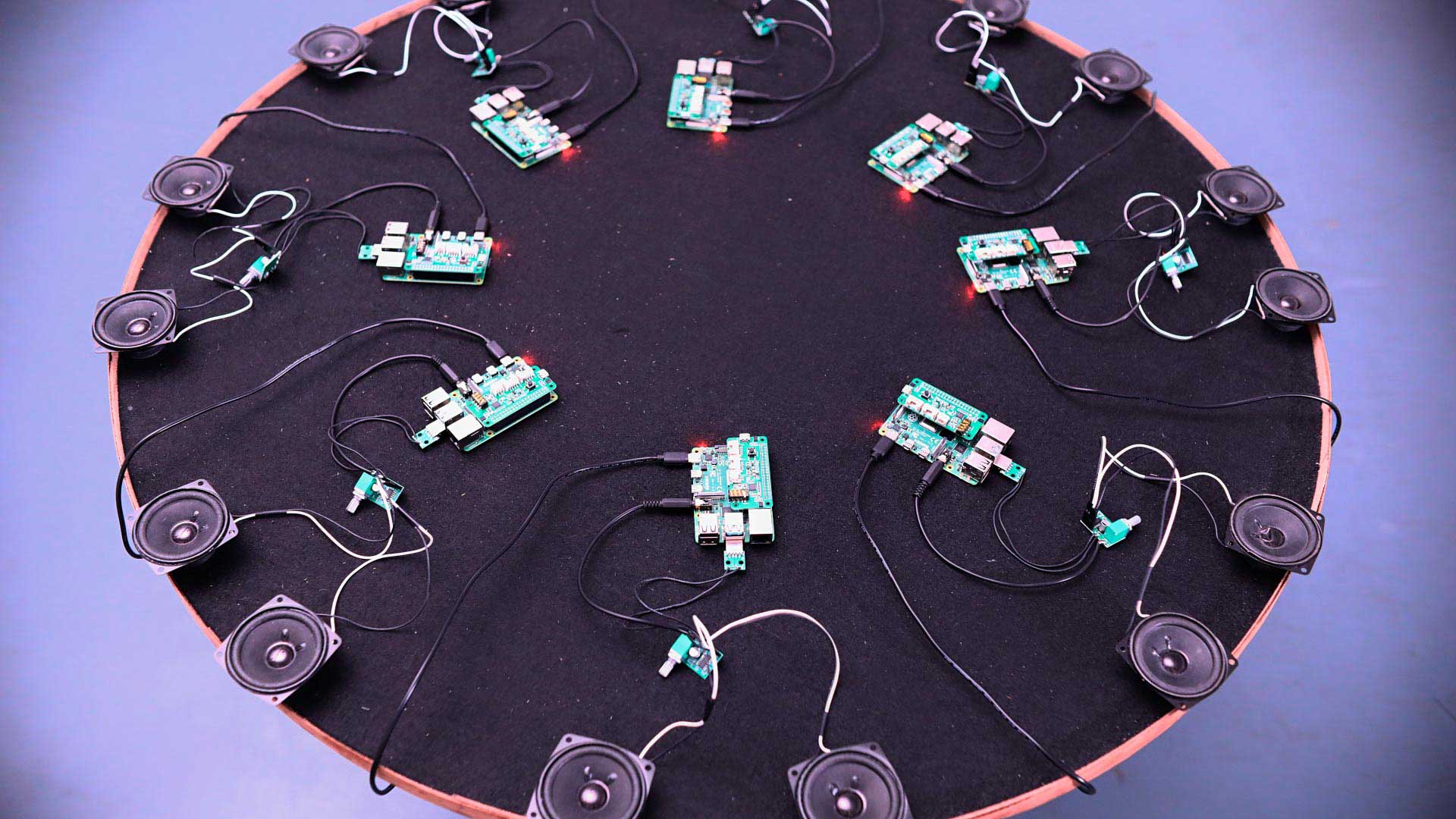
Ich Sage Was Ich Sagen Kann is a voice composition experiment, where multiple self-made voice bots have a dialogue with each other by using Keyword Spotting (KWS) in the Automatic Speech Recognition (ASR) domain. The dialogue is not considered as a conversation between different personalities, but it reflects on a process of uttering thoughts from my personal experience. I make speech recognition modules by using a Convolutional Neural Network (CNN) model installed on eight microcontrollers, which give utterances when certain keywords are detected. The composition consists of four parts, from polite one-on-one conversation between myself and one bot to the impolite conversation between 8 bots, which reflects the chaotic state of mind in the thinking process. This practice aims not only at overcoming problems in communication and learning of a foreign language at a personal level, but also at the possibility of communication with human language between machines.
Hyungjoong Kim
Berlin University of the Arts
Berlin, DE
RTFM: Read The Feminist Manual
Mara Karagianni
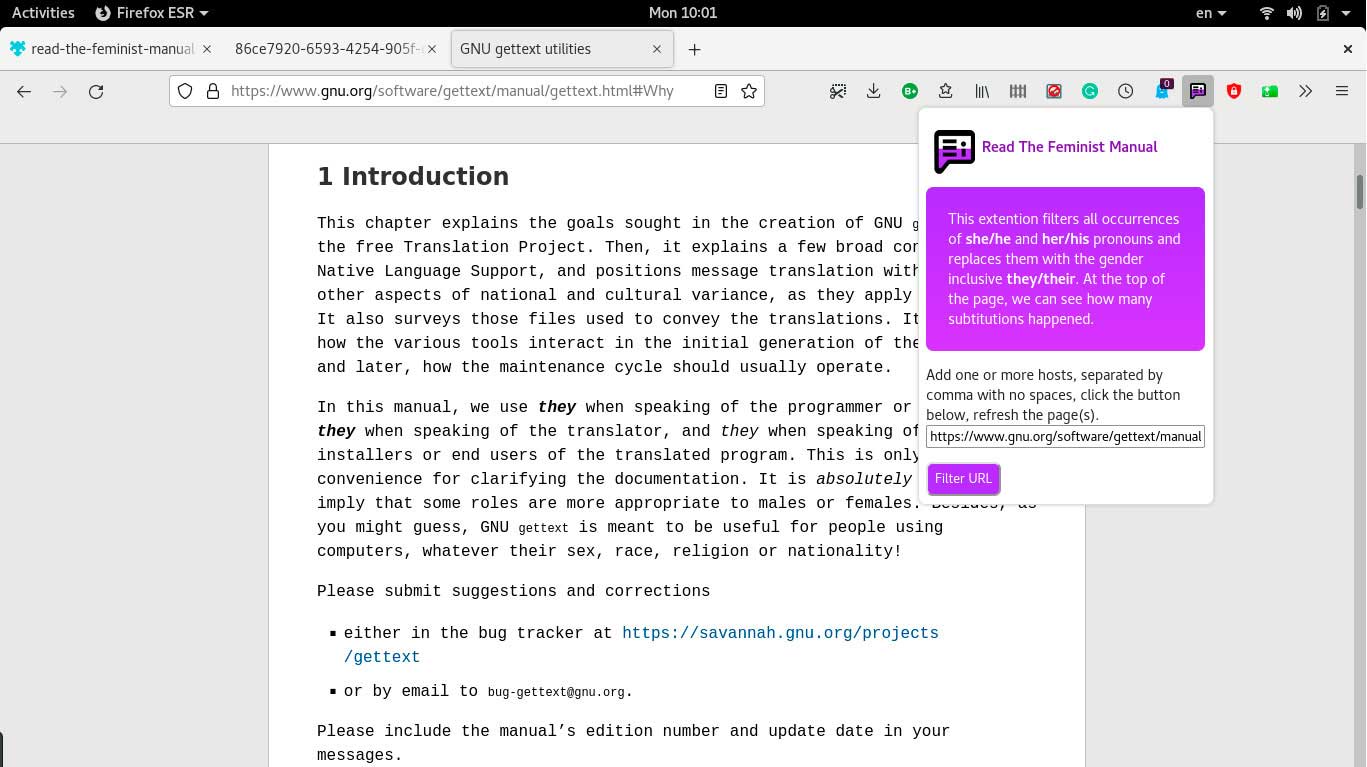
Read The Feminist Manual is a re-appropriation of RTFM (Read The Fucking Manual) and addresses gender discrimination in the Free and Open Source Software (FOSS) communities and the lack of support in accommodating marginalized voices. The output of the research is an experimental Firefox addon which replaces gendered pronouns he and she with the neutral pronoun they, intended for use with online technical documentation pages, where the programmer is assumed to be a male (he). The project is accompanied by a zine, in which the readers can find information about the inspiration of the project, about the Firefox addon and screenshots of the addon’s implementation in the browser. Along with the project’s documentation, the zine introduces the significant role of feminist servers in shaping a queer community of sysadmins to nurture gender diversity. Read The Feminist Manual research was realized during the author’s fellowship with the Media Enterprise Design Lab of Boulder University of Colorado.
Mara Karagianni
Artist
Athens, GR
PAC-MOM: A game about gender, work, and food insecurity
Annina Ruest
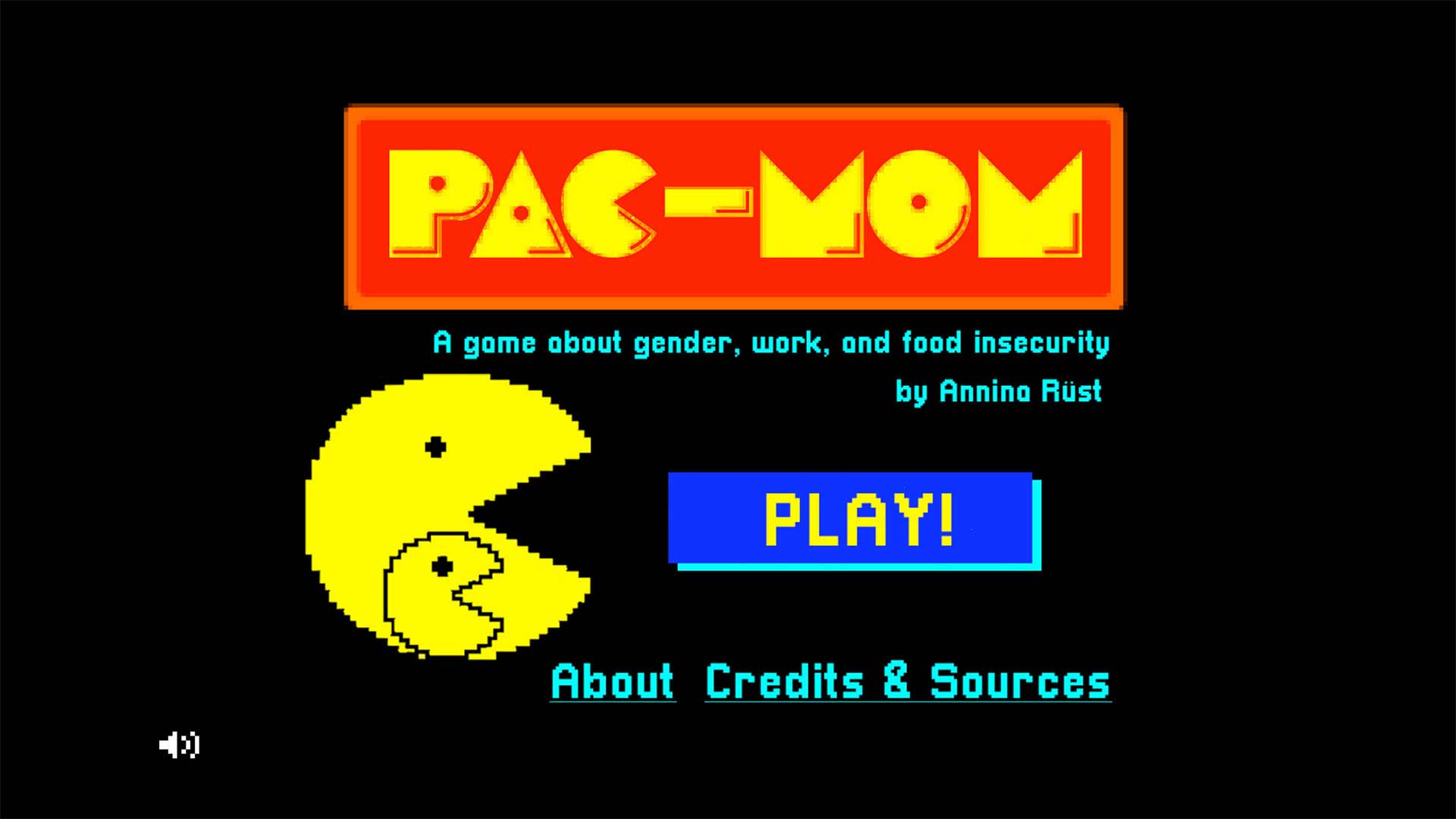
PAC-MOM is a parody of the popular arcade game PAC-MAN (1980) by Toru Iwatani. Game scholars classify PAC-MAN as an eating game. PAC-MOM is a game about gender and food insecurity. PAC-MOM is based on data on hunger as a gender issue including the gender pay gap. It takes place in a situation where accessing food requires PAC-MOM to work a disproportionate amount more than PAC-MAN for the same number of pellets. In addition to having to work more, PAC-MOM must avoid powerful ghost-enemies including patriarchy, misogyny, racism, ableism, and many more. PAC-MOM is programmed for the web in JavaScript/HTML5 and can be played online in most browsers as a single-player game. The game consists of a training level, a character customization screen, and a main level. The training level conveys background information. The information gained in the training level is applied in the character customization screen and the main level.
Annina Rüst
Florida Atlantic University
Jupiter, Florida, USA
A Montage – A Few People – A Brief Moment in Time
Alan Dunning
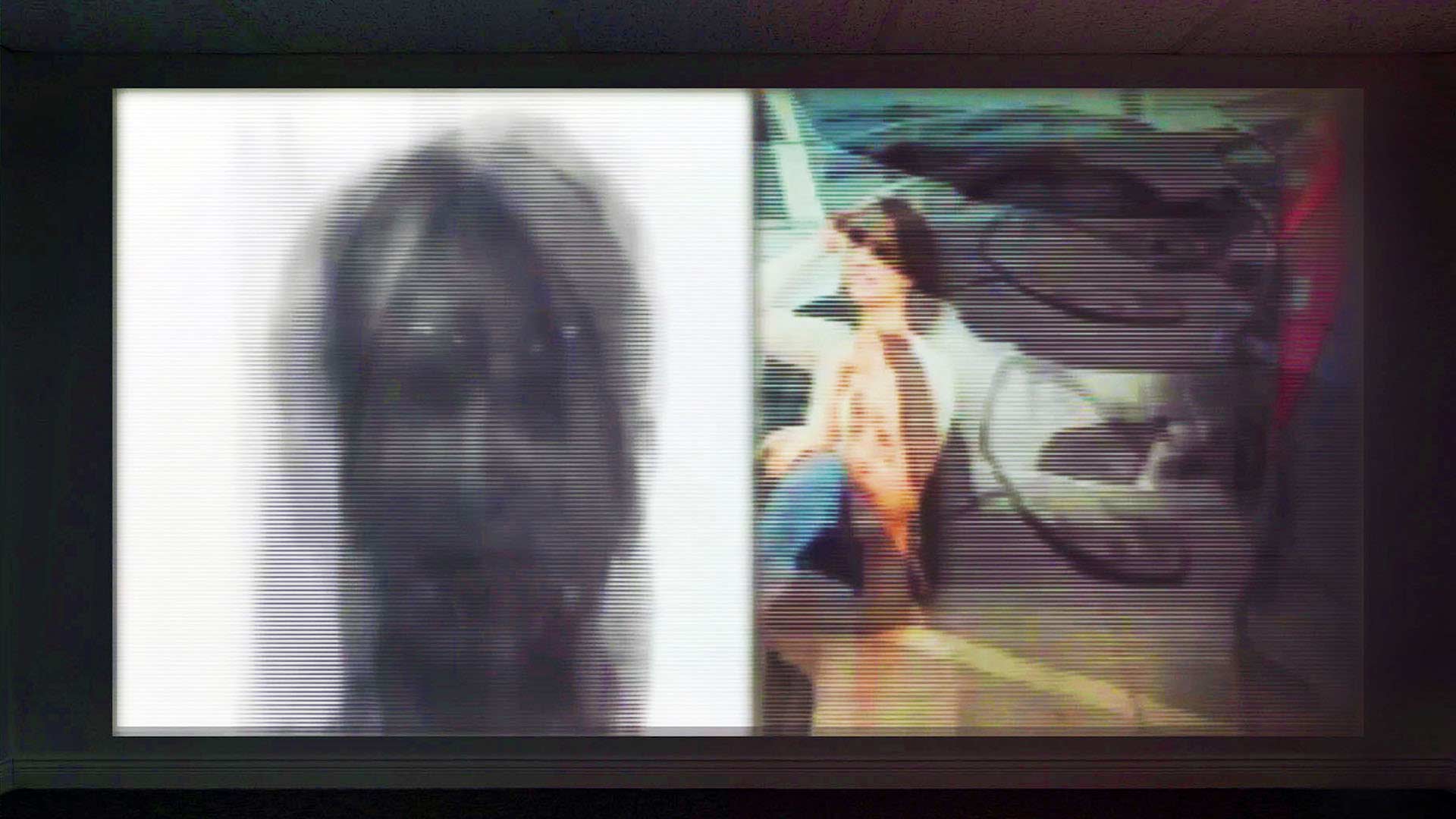
This work records and re-presents the passage of bodies through a space, building a narrative around them through contextualizing found images. The work uses Viola-Jones and KLT algorithms to detect people’s faces and adds them as new frames to a movie playing at a very high speed. The faces captured are continuously added to a rapidly playing looped movie on a screen. They are treated as if they were steganographs – documents that contain hidden, yet retrievable and meaningful information – and parsed for recognizable patterns to generate search terms to scrape images from the net. The images are added to an adjacent screen.
The work uses the practical and theoretical features of two long existing streams of work: those that use face and visual pattern tracking to identify images at the limits of our perception, and those that use pattern recognition to tease cryptic content from silent spaces and random noisy images (Dunning and Woodrow 2009; 2011). Both use the idea of the unseen or unnoticed, at or beyond the limits of our perception, to change our perception of a space. Both use an expanded idea of what can constitute an index – the mark or sign left behind by an action, event or presence that can reconstitute that moment in the reconstruction of absent bodies and events.
Alan Dunning
Independent
Victoria, CA
Cryptographics
Rosemary Lee

Cryptographics is an artwork that reflects on the recent phenomenon of crypto art, which involves associating digital artifacts with blockchain, tokenizing artworks with non-fungible tokens (NFTs). This practice has recently been the subject of heated debate within art and the humanities, as well as setting off a feeding frenzy by artists, digital content creators, and speculative investors. In Cryptographics, I take an artistic interpretation of this topic, highlighting the way that while tokenization is intended to make unique digital assets more easily traceable, it treats content as inconsequential, raising a number of questions regarding the value of digital artworks. Working with found text fragments from discussions centered on NFTs and crypto art and existing images, the work seeks to negate the representational role of images, reducing the, to mere fields of pixels. By obscuring the visual content of the images and text, this work questions what impacts it may have if we are to treat all digital content as commodifiable, yet interchangeable.
Rosemary Lee
Independent Artist and Researcher
Porto, PT
Things Have Forgotten What the Shapes are For
Karen Ann Donnachie
Andy Simionato
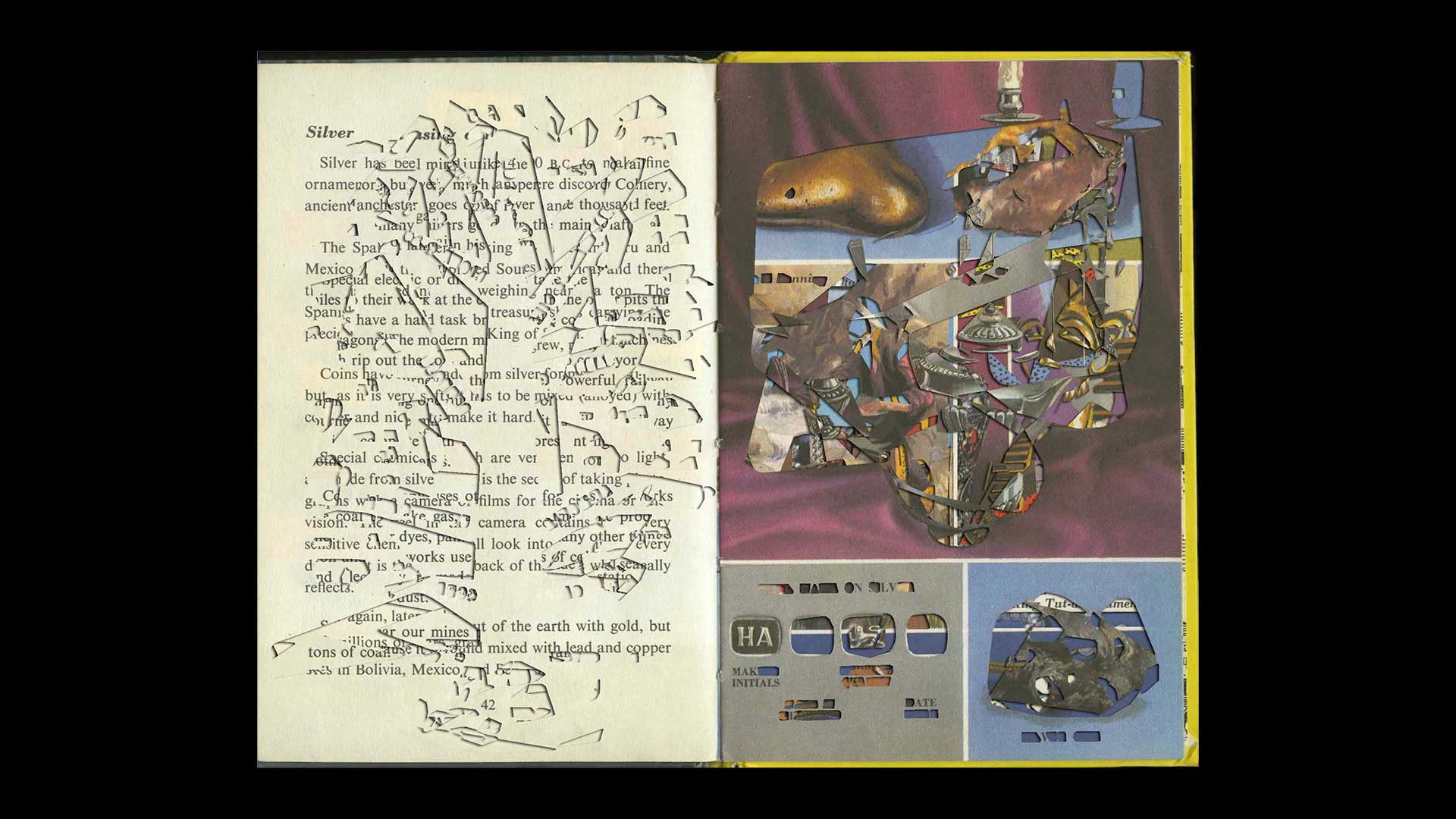
Every burned book enlightens the world.
(Emerson 1841)
Things Have Forgotten What the Shapes are For, (2022) is an automated-art-system consisting of a CNC (Computer Numerical Controlled) laser-enabled machine, driven by custom-coded software that removes parts of any book in order to reveal relationships between the images and texts across multiple pages. Each automated ‘reading’, or burning, generates a unique artefact while destroying the original, producing new ‘portals’ through the book. An experiment in post-digital publishing that explores the differences between the deconstruction and the destruction of knowledge in the age of the mass-digitisation of the book.
Karen Ann Donnachie
Independent artist
Melbourne, ASTL
Andy Simionato
RMIT University
Melbourne, ASTL
Leaks: reflections of digital world in material objects
Marta Hryc
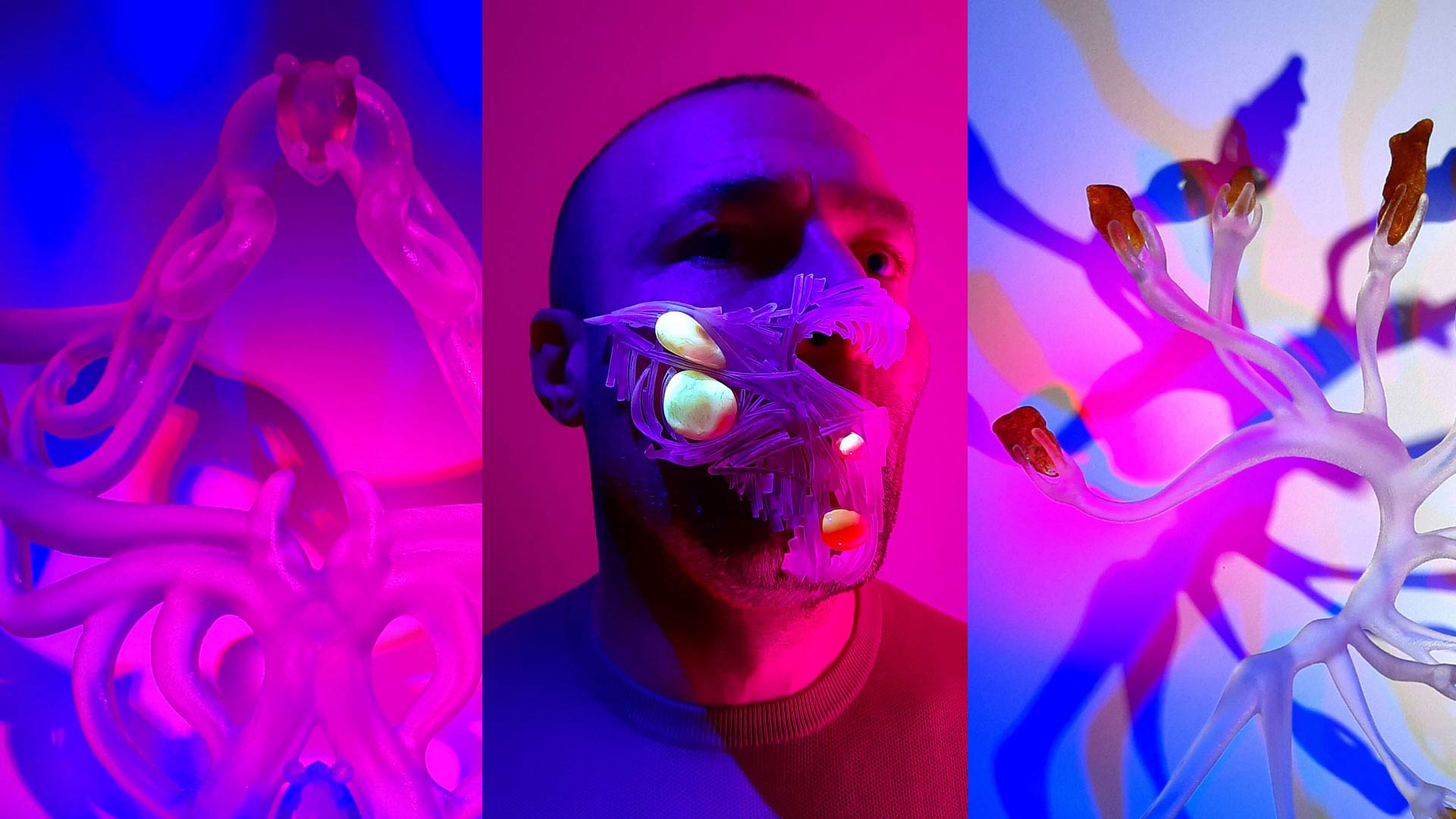
For the Leaks project, I developed a design method based on two key assumptions. The first provides that each material object created in a given period reflects current interests of culture. The second identifies contemporary culture as a phenomenon rich in digitally generated content and makes that content a medium for further work. The project assumes a reversal of the flow of aesthetic features of objects. In this case, it occurs from the digital to the material environment, and is not an attempt of materiality to create and expand its digital layer but rather of digitality to recognize the stylistic features of the world of algorithms and implement them into resisting materiality. A collection of post-jewellery objects engages tools derived from the areas of algorithmic-aided design or additive technologies and collides them with traditional materials and methods used in classic jewellery. The area of these attempts is our face – it identifies us in both the digital and material world. Are we willing to accept the leaks of digitality in our everyday materiality and to what extent are our digital versions separate from the bodily ones?
Marta Hryc
Academy of Fine Arts
Gdansk, PL
Bathing in Lightness
Simon Stimberg
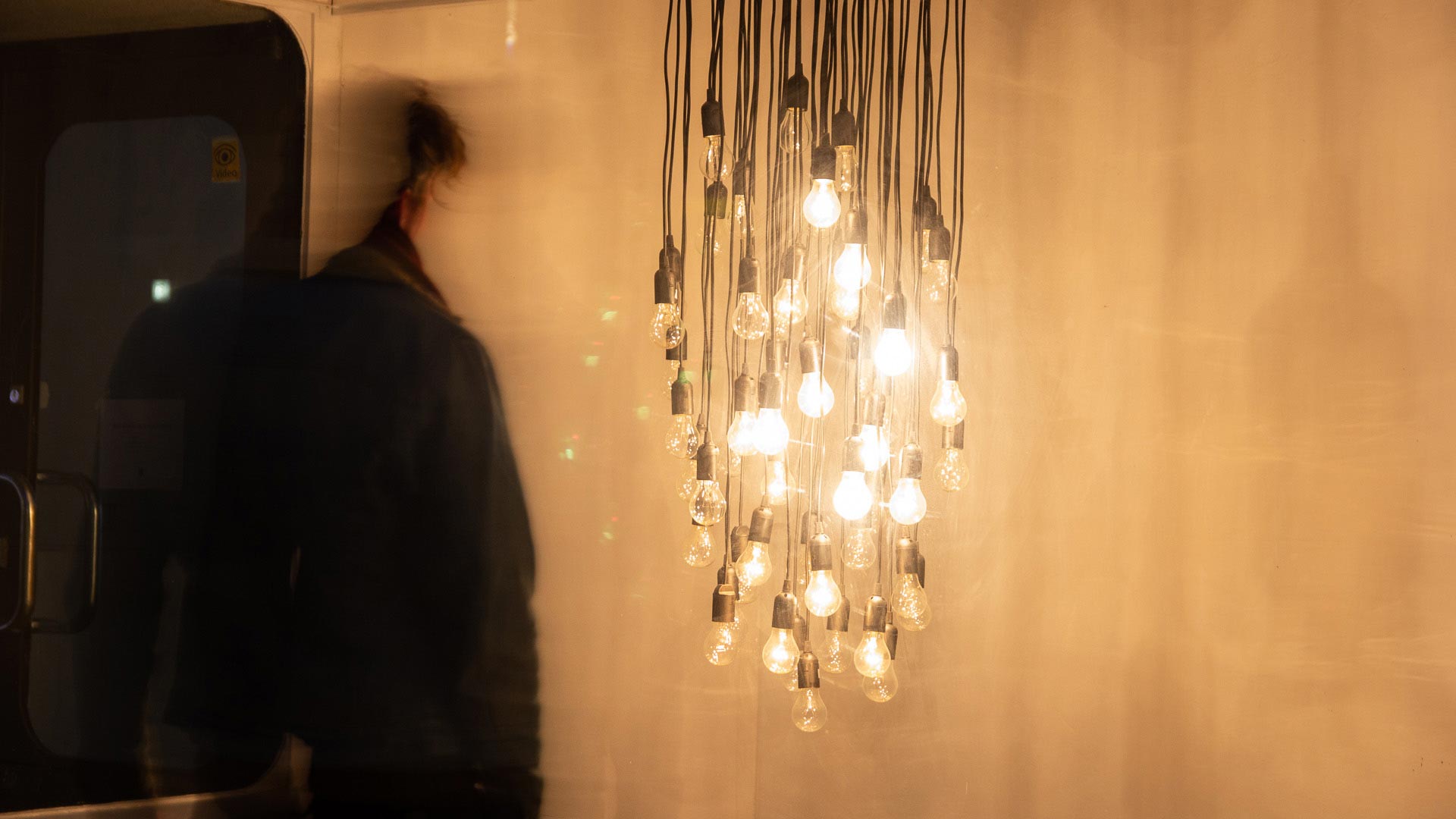
Bathing in Lightness is an interactive audio-visual installation that intends to reflect our relationship towards the machine as such, regarding the way we tend to perceive the apparatuses around us as living beings with a life of its own. The installation features a swarm intelligence inside a virtual – yet physical – goldfish bowl, that is exploring its tiny universe while trying to communicate with the outer world. The swarm imagines its own interpretation of reality, while reflecting the presence of visitors moving in front of the piece. Build out of a commonly sensed longing for analogue, thus easy understandable mechanisms, the installation’s basic component represents an archetype of electric machines: the incandescent light bulb. Thereby the installation acts as an analogue interface through which the visitor can make contact with a virtual being while breaching the digital realm, provoking to contemplate on her/his relationship towards the artificial entity. Along with a calm and soothing sonification of the swarm’s movements, we are allured to rest in front of the piece as we would by warming ourselves at a cozy campfire, remembering us of ancient and more leisurely paced times.
Simon Stimberg
Berlin, DE
Brass Art TouchAR
Anneke Pettican
Chara Lewis
Kristin Mojsiewicz
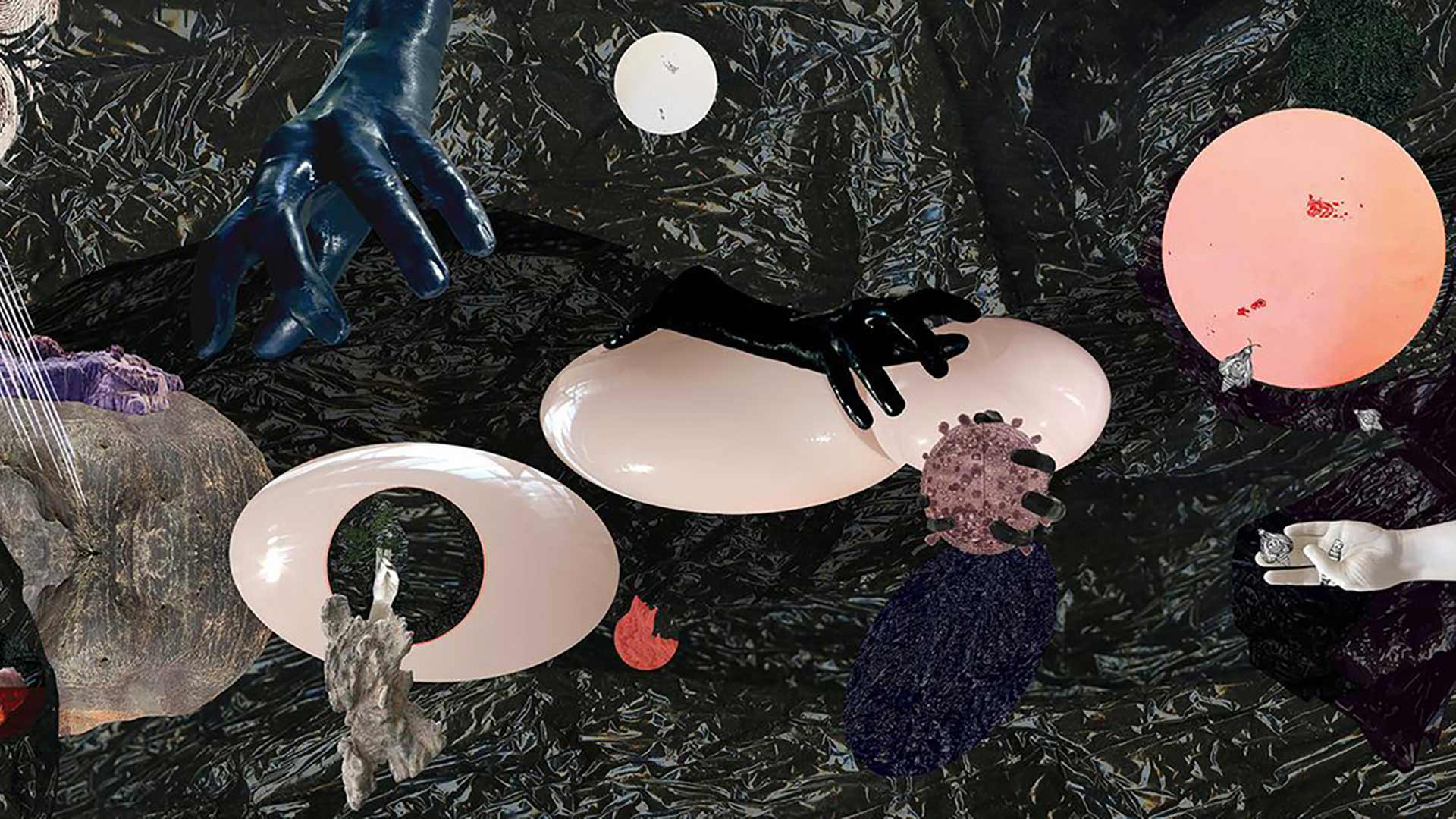
TouchAR is an Augmented Reality artwork made for Apple and Android mobile devices. TouchAR invites the user to download the free app to activate images with animation and sounds. These include tracking butterflies, a leaping locust, an inhaling lung, and fingers of flame that invite repeated fingertip touch. The auditory aspects of TouchAR mix live capture of the artists’ voices with field and studio recordings to create electroacoustic soundscapes. The artwork brings together three-dimensional copies of the artists’ hands with collaged imagery drawn from environmental regeneration, the Tapestry of the Apocalypse, made in Angers in the 14th century, and historic, anatomical, and cosmological illustrations. The AR system was developed in Unity (during the Covid19 lockdown 2020-21) with the AR Foundation SDK utilising a combination of image and plane detection to augment each printed digital artefact. The artists use technology to suture analogue and computational art making, to explore ideas of touch and engagement with ecology in a technological society and address the deep past, present challenges and possible futures. TouchAR offers an embodied experience with AR as a means of enchantment.
Anneke Pettican
University of Huddersfield
Huddersfield, ENG
Chara Lewis
Edinburgh College of Art at University of Edinburgh
Edinburgh, SCT
Kristin Mojsiewicz
Manchester School of Art at Manchester Metropolitan University
Manchester, ENG
Sentire: a participative interactive sound performance
Marcello Lussana
Pascal Staudt
Marta Rizzonelli
Benjamin Stahl
Jin Hyun Kim
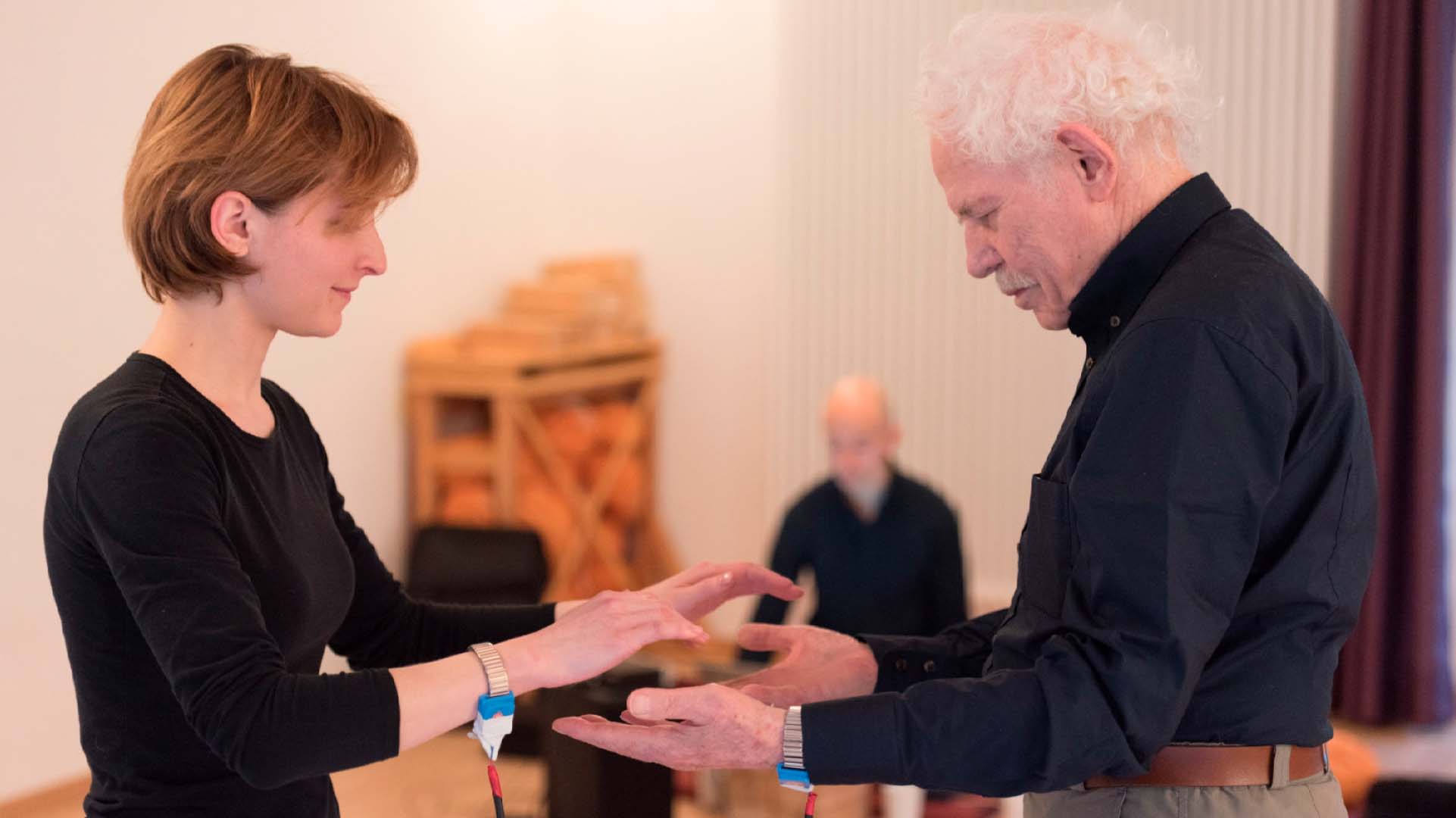
Sentire is both an artwork and a research project in which proximity and touch are sonified with the aim to enhance body perception and social interaction. Sentire uses a digital system that mediates body movements and musical sounds, using a Body-Machine-Interface that allows two (or more) people to interact with one another in a physical environment—rather than in a virtual environment. The artwork consists of a participatory performance, which has been presented at numerous events since 2016. Distance and touch between the users can be measured and mapped to an algorithmic sound environment in real time. Through this multimodal experience, the awareness of the self and the other is enhanced on bodily, especially kinaesthetic levels, i.e. movement perception. Since 2019, Sentire has been also a research project at the Humboldt University of Berlin, with the aim to develop the system for therapeutic purposes.
Marcello Lussana
Humboldt University of Berlin
Berlin, DE
Pascal Staudt
Humboldt University of Berlin
Berlin, DE
Marta Rizzonelli
Humboldt University of Berlin
Berlin, DE
Benjamin Stahl
Humboldt University of Berlin
Berlin, DE
Jin Hyun Kim
Humboldt University of Berlin
Berlin, DE
With Love. From An Invader
Yan Wang Preston
Monty Adkins
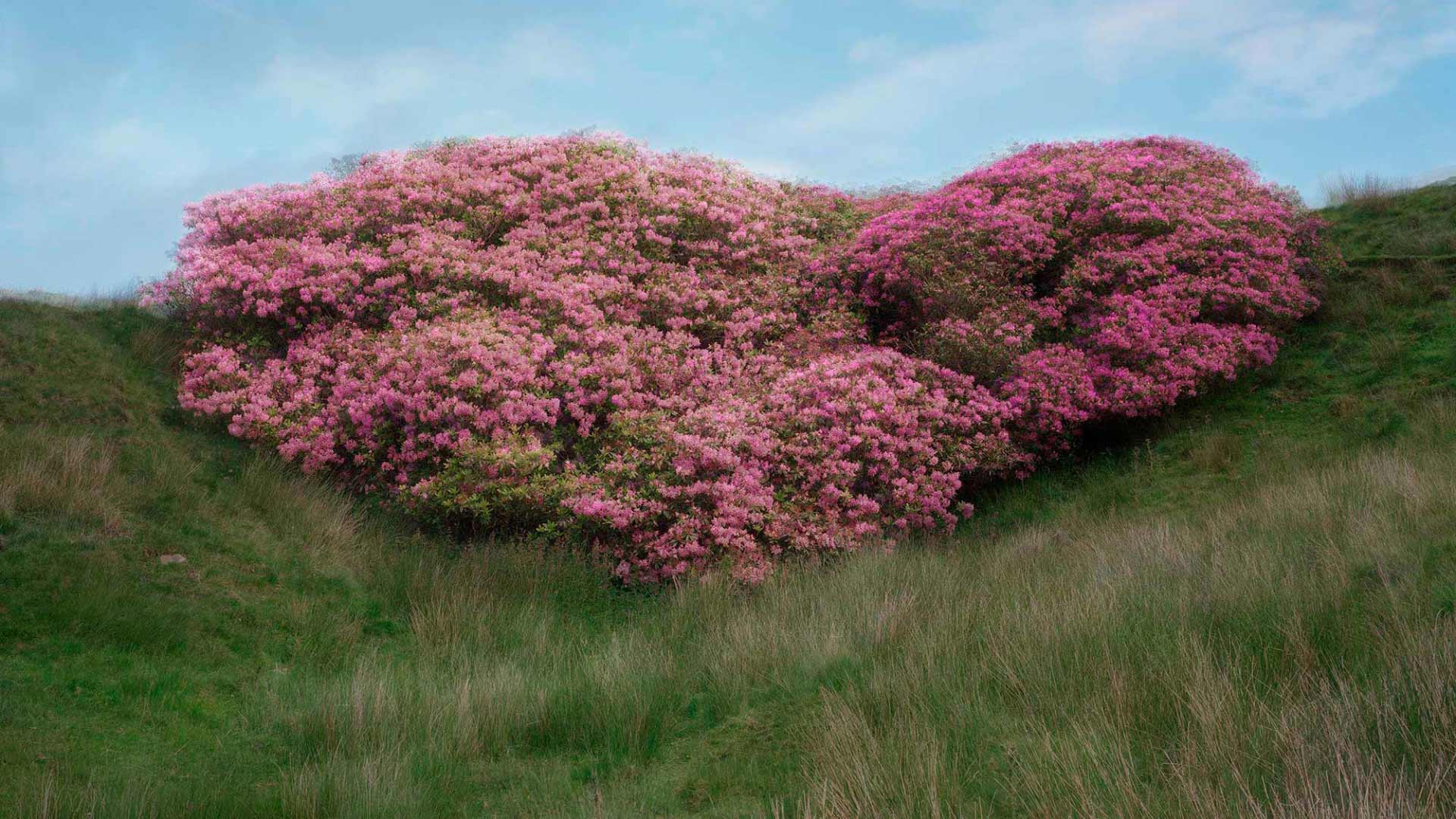
With Love. From An Invader. is a multi-screen audio-visual installation created during the COVID-19 lockdown in 2020-2021 documenting the landscape and soundscape around Sheddon Clough in the north of England using the invasive rhododendron ponticum as a symbol not only of the pervasiveness of COVID-19 but also as a means of exploring the political and xenophobic backlash surrounding it. The work explores notions of invasiveness, identity, landscape and recombinant ecologies. The installation deconstructs documentary methods in photography and sound recording to present a novel recombinant experience of place (Iosofat 2009) integrating disparate theories of place, landscape and habitat (Mabey 1973, Maris 2011, and Rotherham 2017).
Yan Wang Preston
University of Huddersfield
West Yorkshire, ENG
Monty Adkins
University of Huddersfield
West Yorkshire, ENG
Kontakt (simultan)
Hanns Holger Rutz
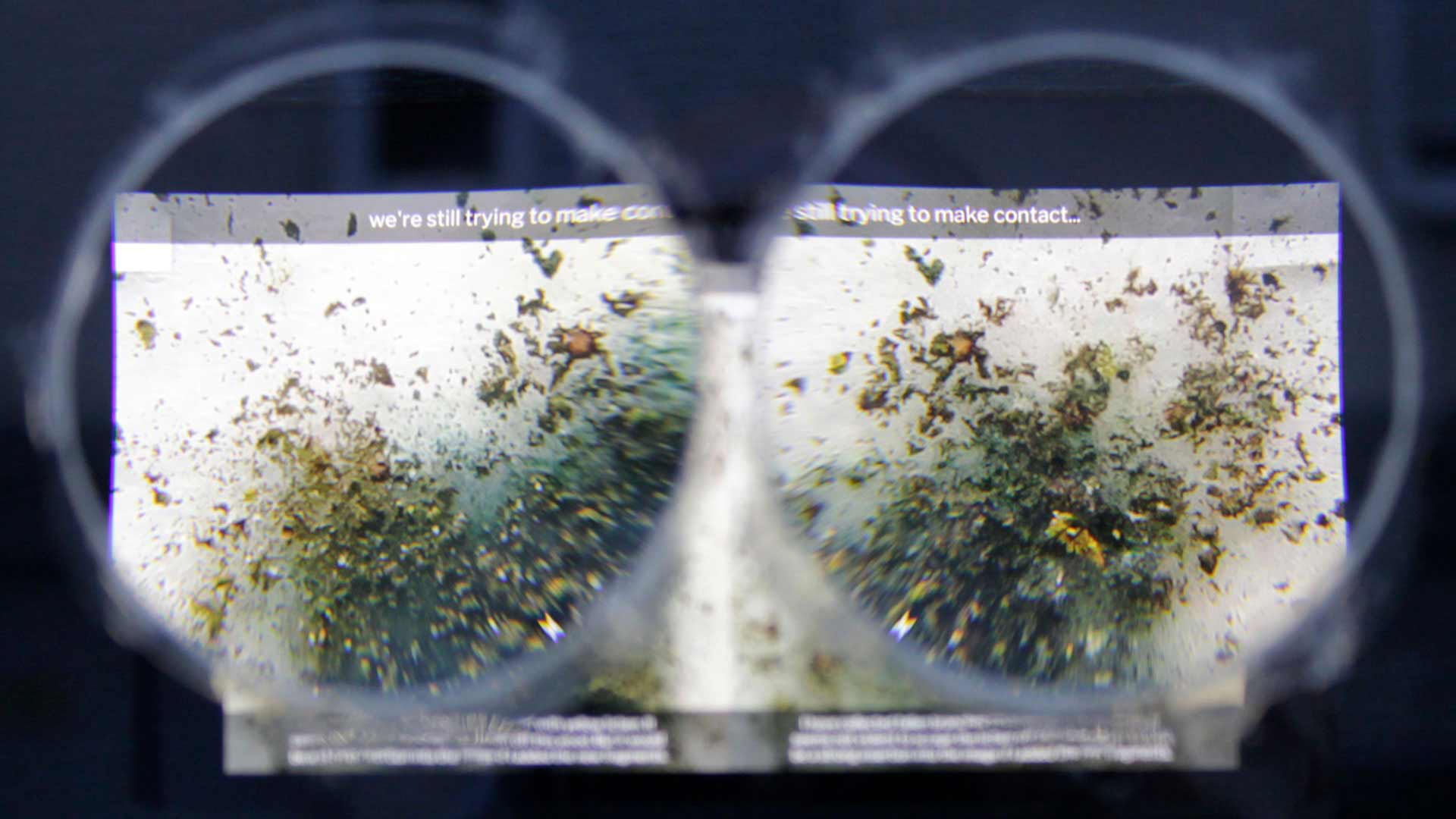
Kontakt (simultan) is a hybrid net-art piece and screen installation on an experimental waiting process taking place as a permanent arrangement inside the studio of Reagenz. Here, a glass plate with collected lichen fragments is irrigated and photographed four times a day, perhaps producing an extremely slow growth, that is revealed as a time series of the photographs. The recordings began in April 2021. The process can be followed online, as a bot posts the photographs on a social media account. The second form are physical installations, using either a suspended screen in a showroom window, in front of which stereoscopic lenses are mounted, or a tabletop viewing device. In these versions, the most recent photo is superimposed with a photo that was taken a month ago. The tabletop version allows the visitor to scroll through the time series. The photographs are augmented by text lines contributed by people reacting to an ongoing open call, reflecting on waiting and on making contact.
Hanns Holger Rutz
University of Music and Performing Arts
Graz, AT
Blomster – The Human Garden
Arne Eigenfeldt
Angela Ferraiolo
Kathryn Ricketts
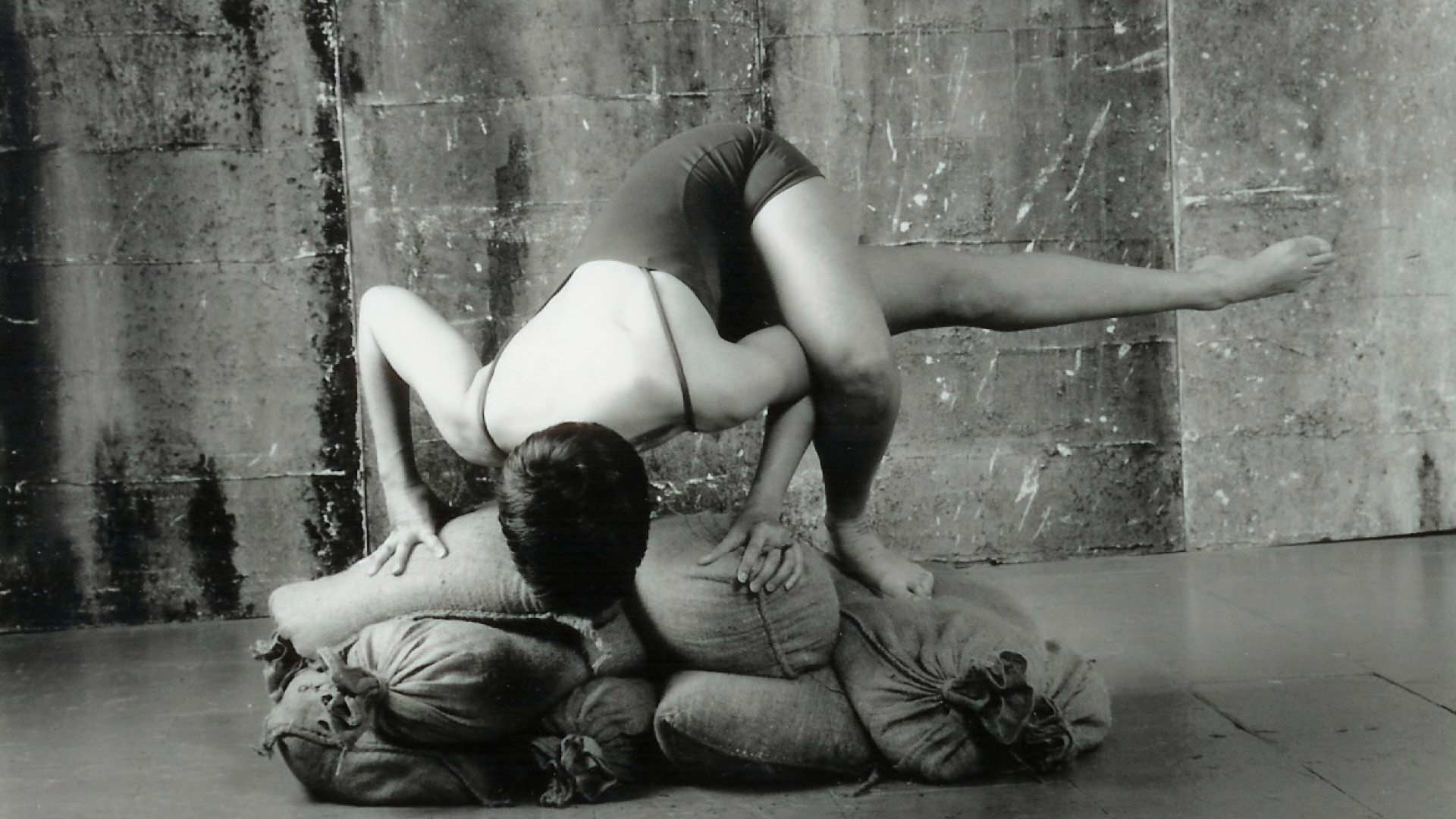
Blomster is a beautiful word and rolls around in the cavities of speech like a plump gum drop. It is the Danish word for flower and became the core of a choreographic work with Kathryn Ricketts’ Danish dance company 30 years ago on a stage laden with fresh flowers. The intricate patterns of dancers in white, moving through metaphors of garden life: the weeds, the buds and the blossoms, was accompanied by the words of an 85 year old gardener with proud and loving descriptions of tending to his lifelong garden. This work has been transported and reconfigured into the present with Angela Ferraiolo’s brilliant digital and everchanging gardens and Arne Eigenfeldt’s stunning generative soundscapes. We are exploring the timelessness of nature within a digital age and the many human relational metaphors that not only endure but thrive as we move into a future that threatens social austerity.
Arne Eigenfeldt
Simon Fraser University
Vancouver, CA
Angela Ferraiolo
Sarah Lawrence College
New York, USA
Kathryn Ricketts
University of Regina
Regina, Canada